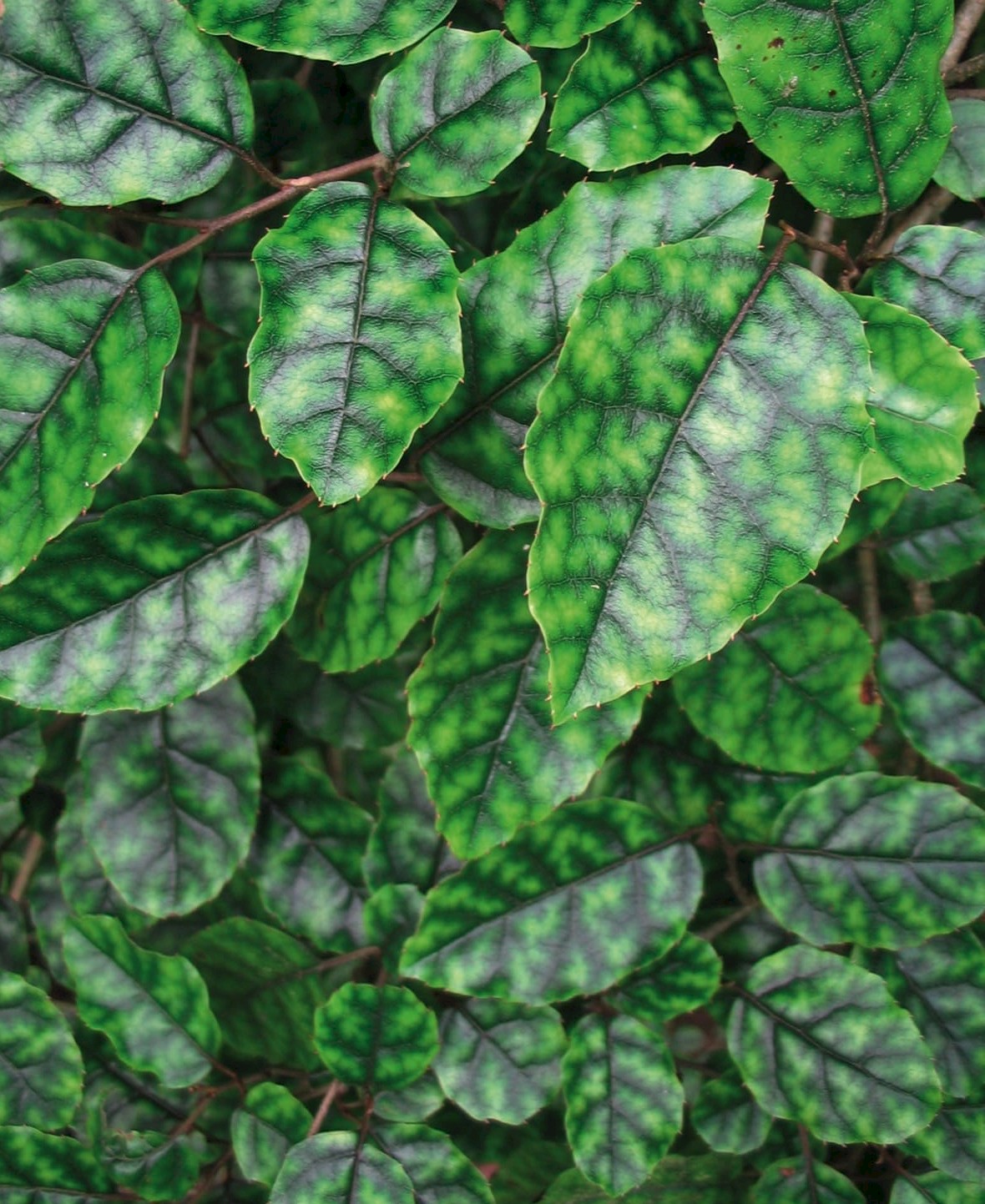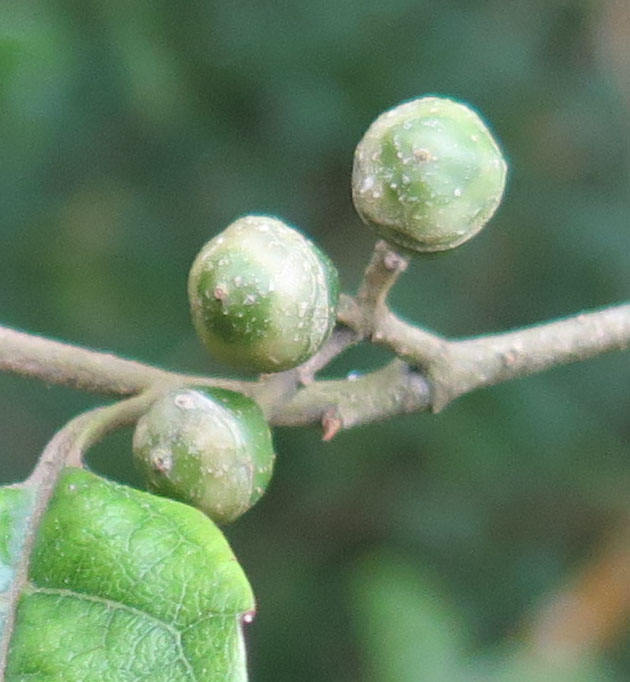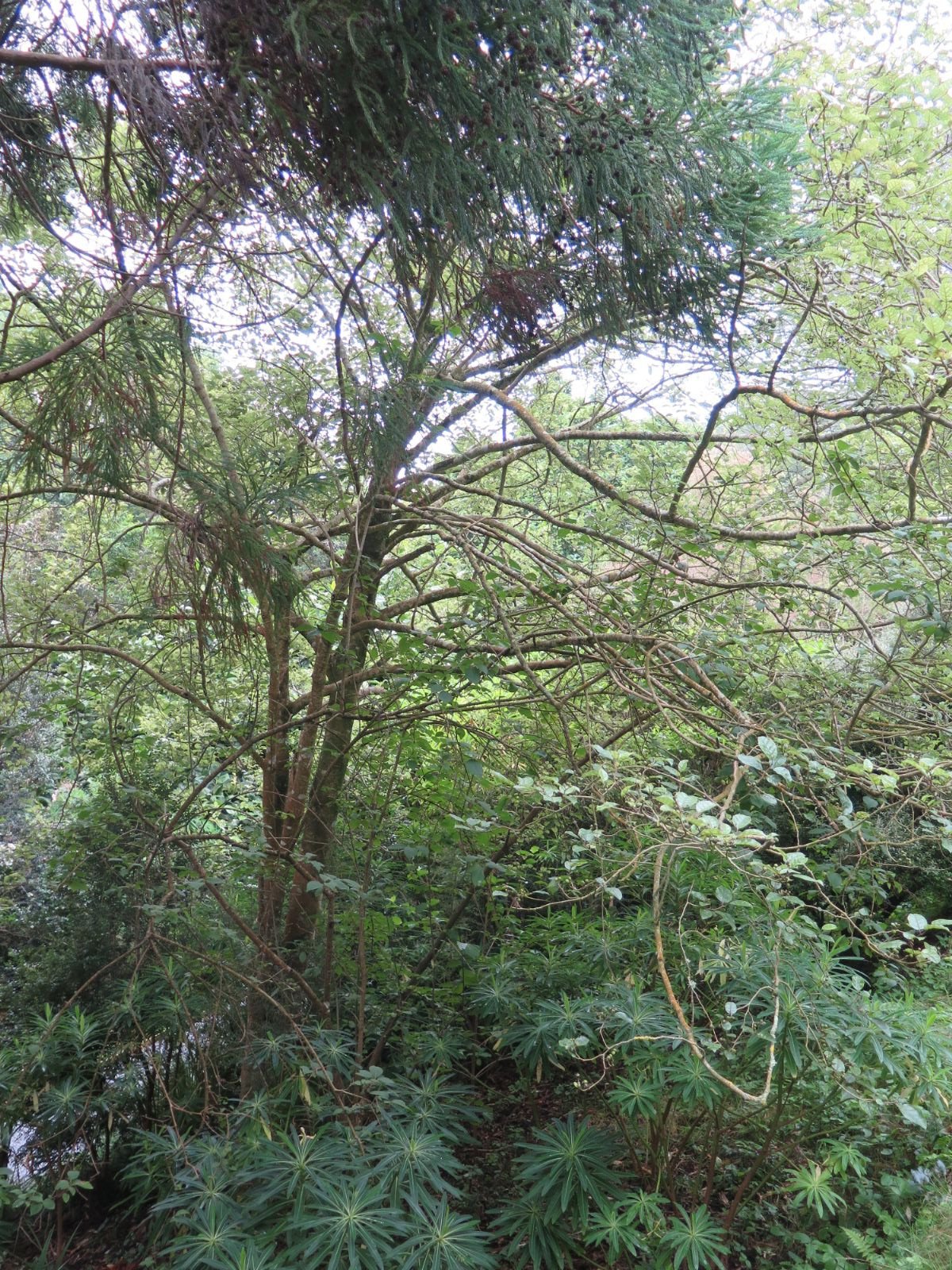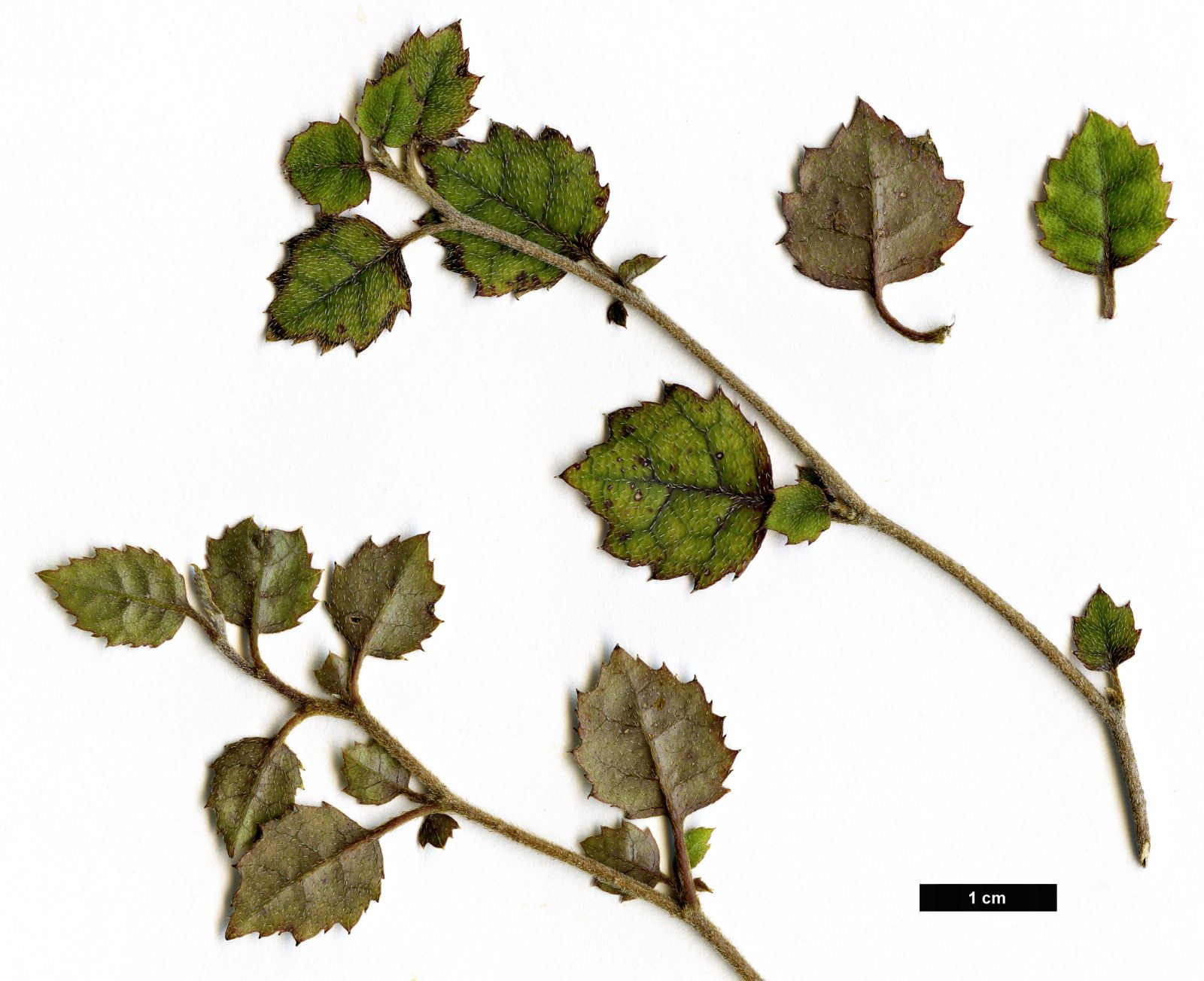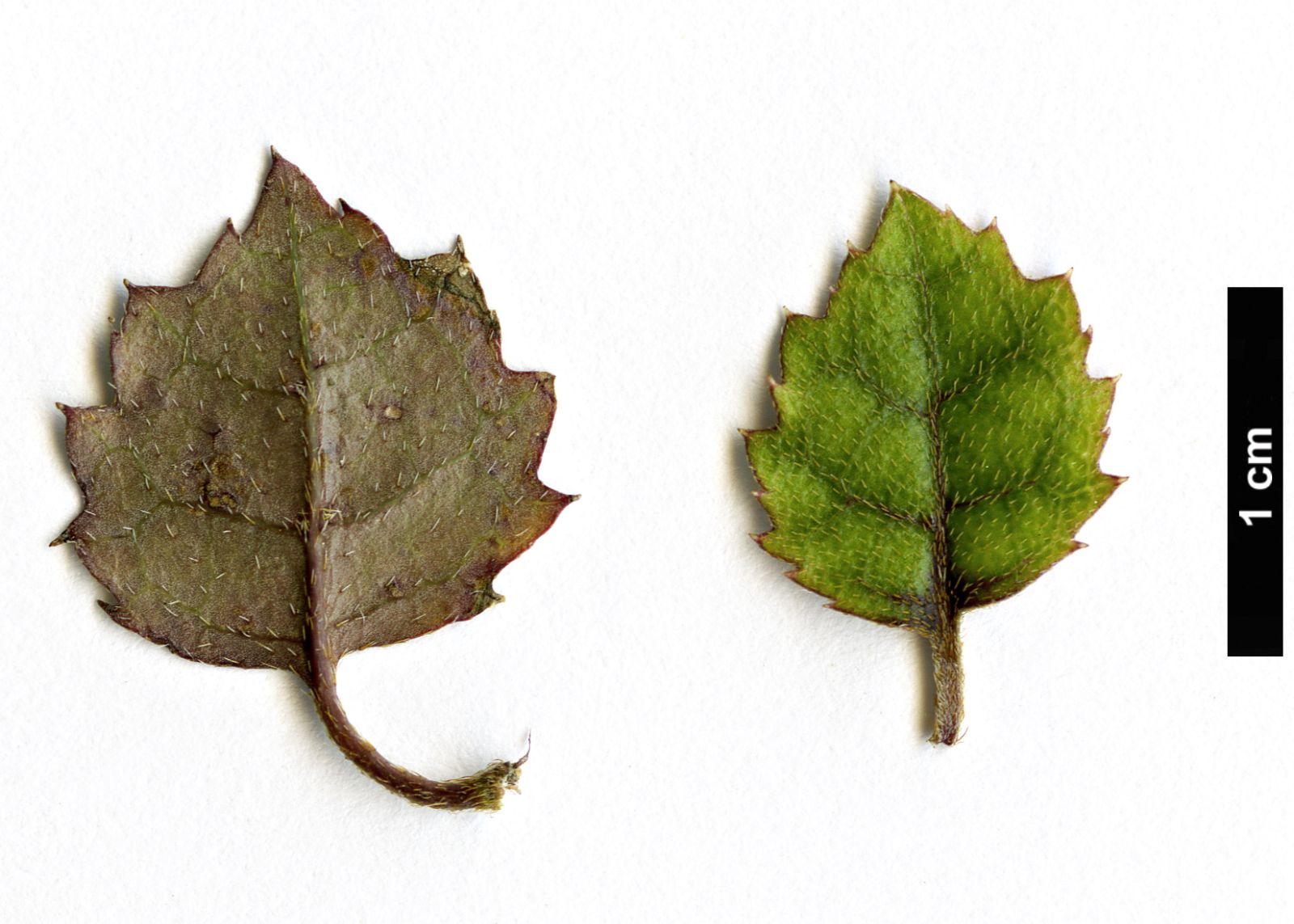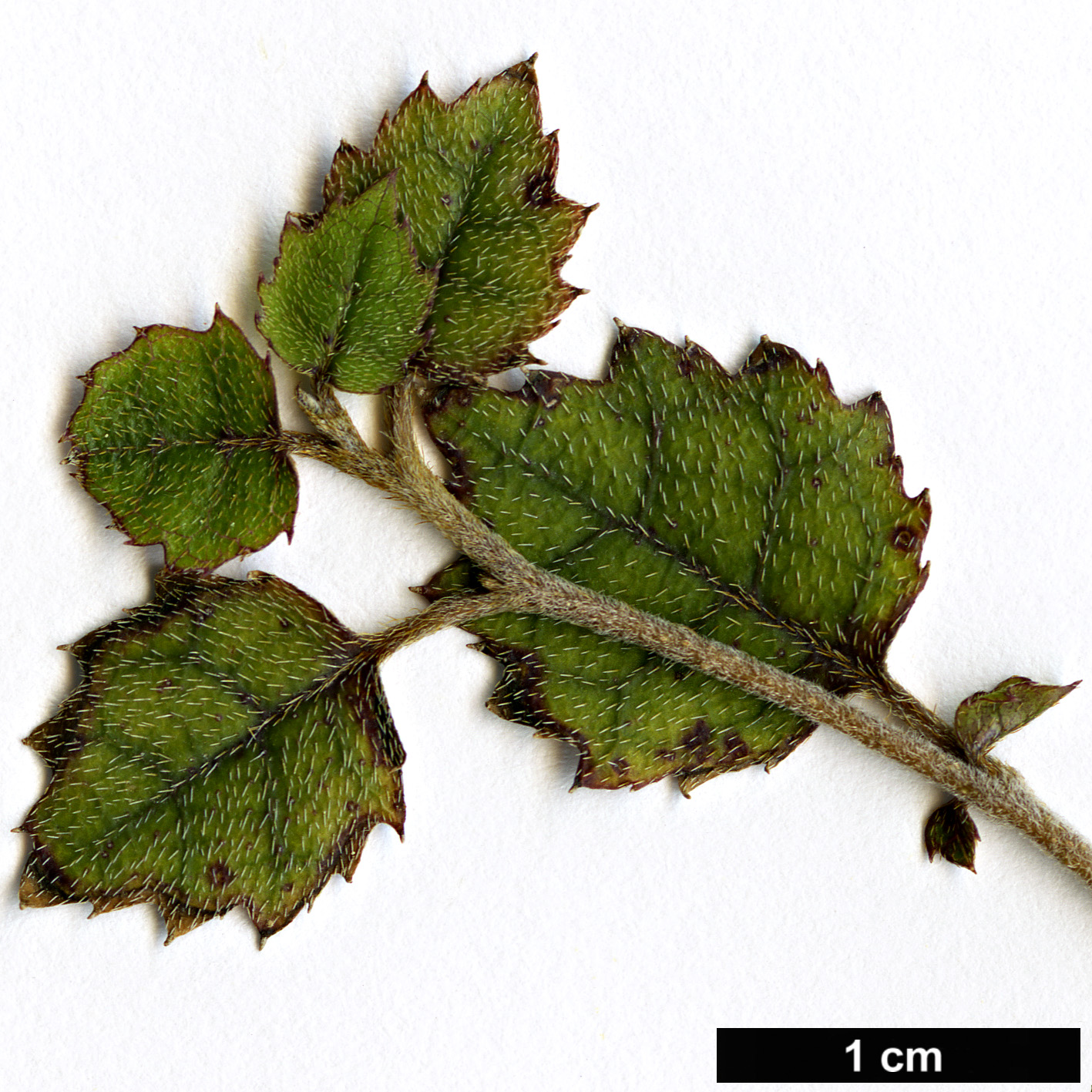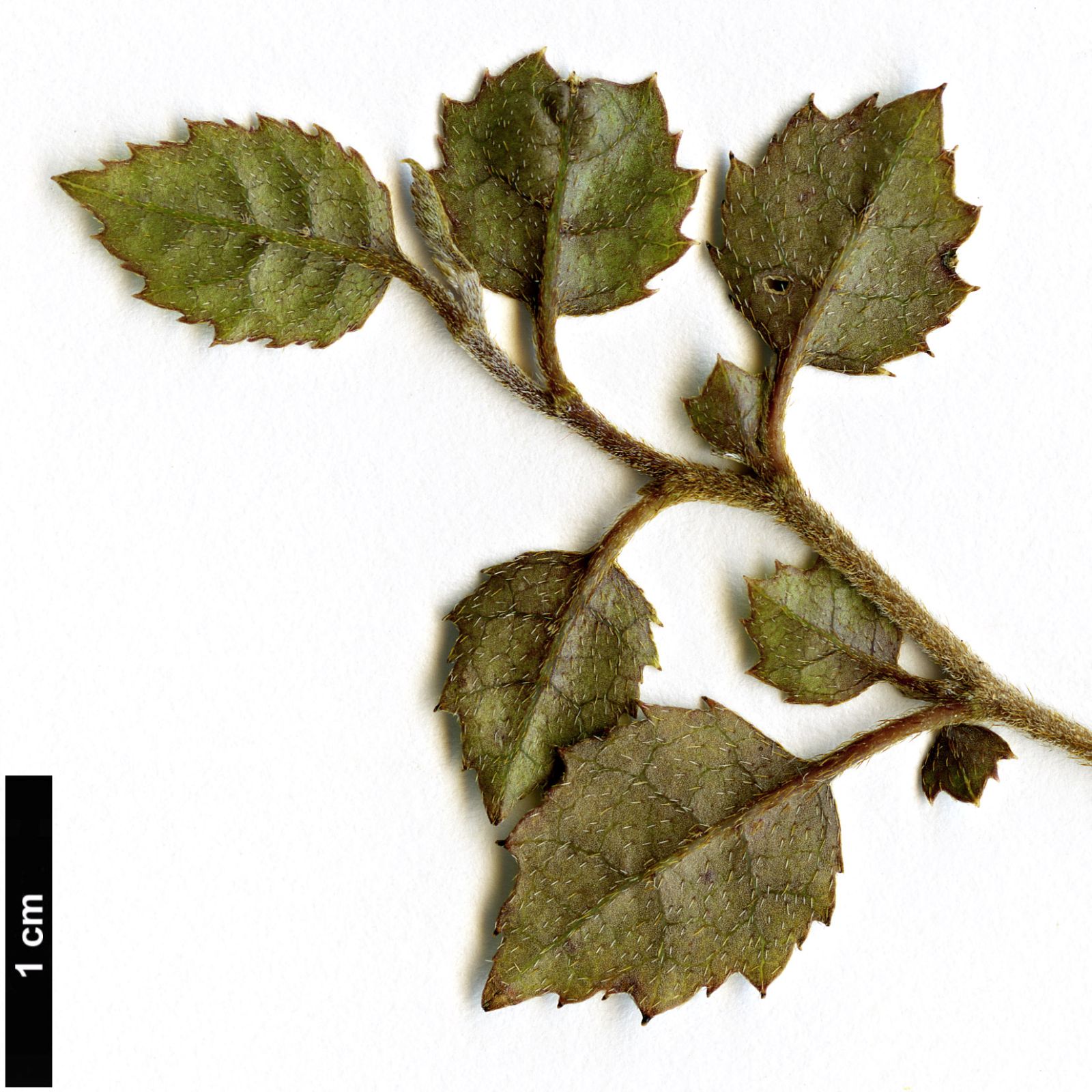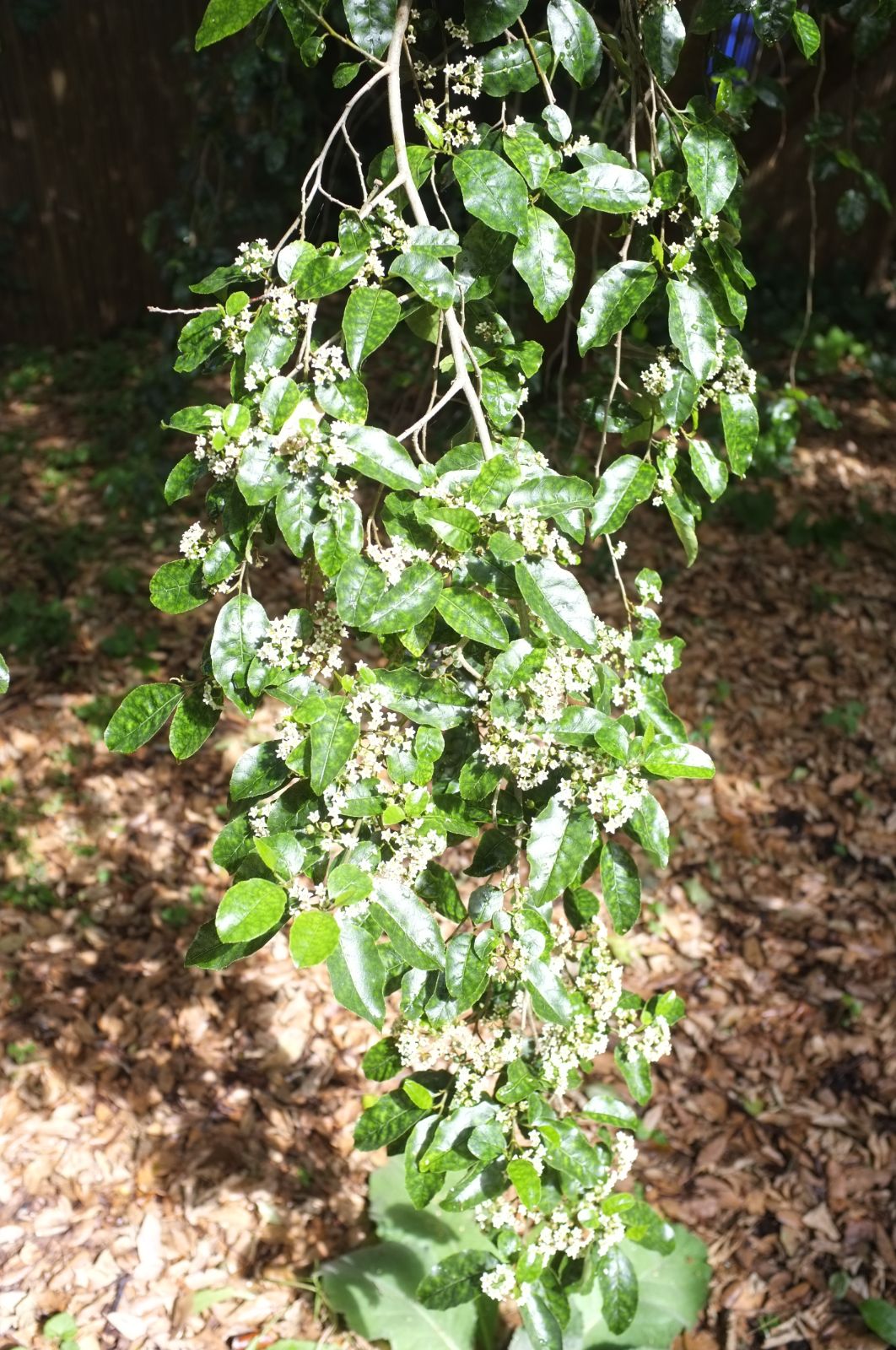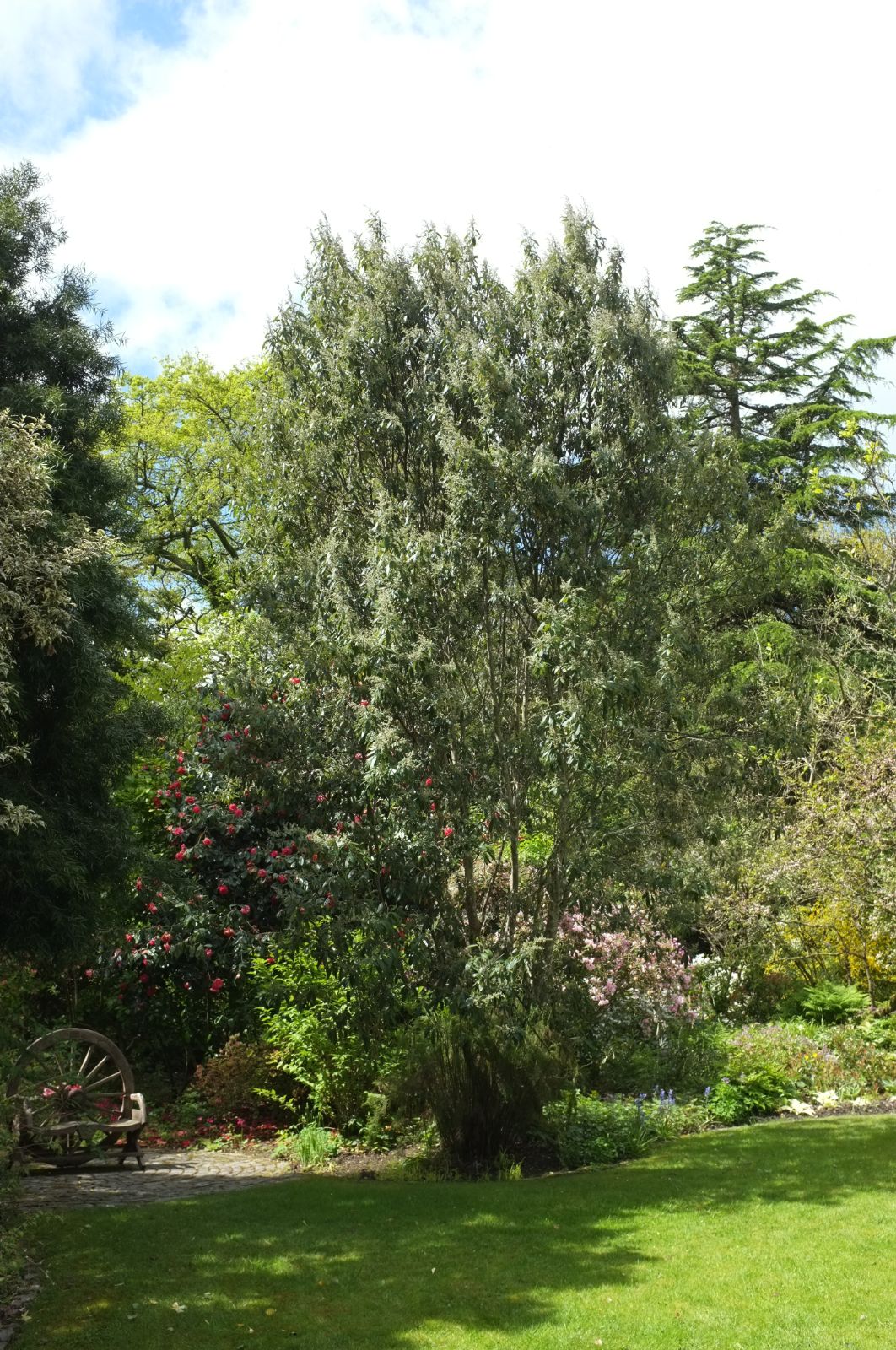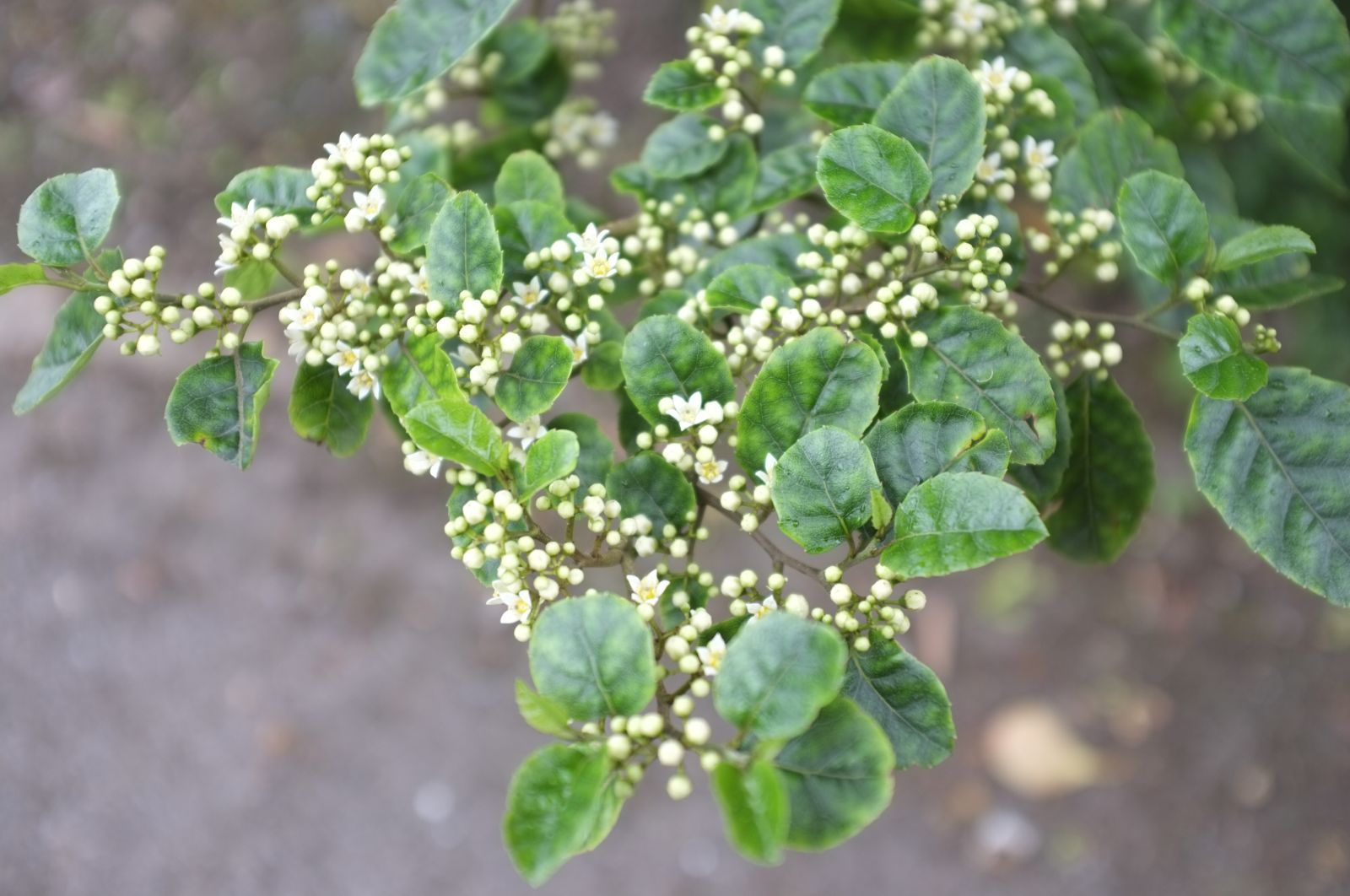Carpodetus serratus
Credits
Article from New Trees by John Grimshaw & Ross Bayton
Recommended citation
'Carpodetus serratus' from the website Trees and Shrubs Online (treesandshrubsonline.
Genus
Common Names
- Marble Leaf
- Putaputaweta
Other taxa in genus
Shrub or tree to 10 m, dbh 0.3 m. Branchlets pubescent; in immature form, branchlets slender, interwoven and zigzag. Leaves evergreen; in immature form, leaves membranous, 1–3 × 1–2 cm, broad-ovate to broad-elliptic to subcircular, margins irregularly lobed, petiole to 1 cm long, pubescent; in mature form, leaves thin and leathery, 4–6 × 2–3 cm, ovate to elliptic, yellow-mottled, four to six veins on each side of the midrib, margins finely serrate, apex acute to obtuse, petiole ~1 cm long. Inflorescences terminal and axillary; panicles to 5 cm long and wide. Flowers hermaphrodite or female (on separate plants), 0.5–0.6 cm diameter, 5–6-merous; calyx lobes ~0.1 cm long, triangular; petals white, ovate, 0.3–0.4 cm long. Fruit subglobose, 0.4–0.6 cm diameter, purplish black, with a distinct ring around the circumference. Flowering November to March, fruiting January to April (New Zealand). Allan 1961, Poole & Adams 1963, Salmon 1980. Distribution NEW ZEALAND: North Is., South Is., Stewart Is. Habitat Coastal to montane forests. USDA Hardiness Zone 8–9. Conservation status Not evaluated. Illustration NT213.
The Putaputaweta is notable for two features: its divaricating growth habit in juvenile specimens, and the extraordinary lizard-skin effect of its foliage coloration. The occurrence of divarication in the New Zealand woody flora is discussed elsewhere (see Elaeocarpus hookerianus, p. 319). In Carpodetus serratus it results in a dense bush of twiggy growth around the central stem, thickly covered in the small leaves. These are mottled in darker and lighter green, the darker coloration occurring around the veins and margins, leaving the central interveinal areas pale. The effect is rather reptilian, but also suggests a mineral deficiency, where none exists. This pattern persists in adult leaves, which are larger and have more pronounced marginal teeth, borne on more normal-looking branches. The abundant flowers, produced on mature trees, are white and give quite an attractive effect.
Carpodetus serratus is well established in cultivation in the milder and maritime parts of our area. There is a good group at Logan, currently about 6 m tall, and similarly sized trees occur in Cornwall. It should certainly be tried elsewhere, given a sheltered growing position in moist, fertile soil.

